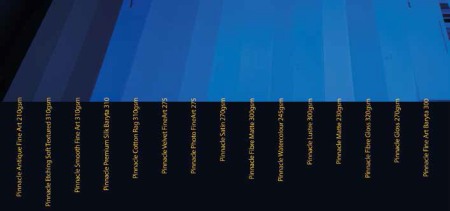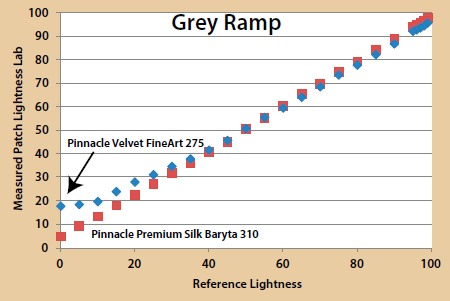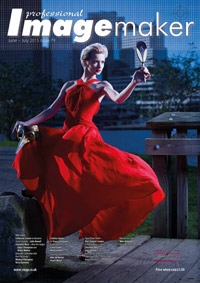articles/Paper/paper-spectrum-page4
The Great Paper Chase - Paper Spectrum Pinnacle Paper Range - part 4 of 1 2 3 4 5 6 7 8 9 10 11
by Mike McNamee Published 01/06/2015

The weights of the papers range from 230gsm to 310gsm, the callipers (thickness) from 270 microns up to 470 microns. Thicker, heavier papers have an impressive physical presence in the hand, which may be lost if an image is framed behind glass. They also tend to be stiffer but this too depends upon the base paper make-up - alpha cellulose is stiffer than cotton rag. Thickness and stiffness all affect paper transport in the printer and we chose to use the manual feed on the Epson 4900 throughout. This could be important in a highthroughput environment where you wish to load a stack of media and leave printing unattended - that is not a good workflow for high-quality high-value art prints by the way!
The 'softness' of the media determines the retention of detail and governs how the ink penetrates the paper. The further it penetrates, the weaker the colours and the lower the Dmax. However, soft papers have their uses for dreamy landscapes and portraits where the softness can be an advantage. The absorbency of the papers was highlighted during our ink and signature testing for the feature in this issue (see Making your mark in this issue). Some of the papers simply sucked the ink right off the nib to produce an ink blot; some of the gloss papers were reluctant to absorb some of the inks at all.

The data from the grey ramps illustrate much of what has been said above. The greyscale response line curves up at the lower shadow end of the scale lifting from the aim point of zero (never achieved!) to above 15% in some cases. The colour bias of the grey ramp also varies from the pure white base paper tone to the colour of the ink at the shadow end. This is not always obvious to the eye which accommodates the tones to match the base paper with the grey that is being printed.
Please Note:
There is more than one page for this Article.
You are currently on page 4
- The Great Paper Chase - Paper Spectrum Pinnacle Paper Range page 1
- The Great Paper Chase - Paper Spectrum Pinnacle Paper Range page 2
- The Great Paper Chase - Paper Spectrum Pinnacle Paper Range page 3
- The Great Paper Chase - Paper Spectrum Pinnacle Paper Range page 4
- The Great Paper Chase - Paper Spectrum Pinnacle Paper Range page 5
- The Great Paper Chase - Paper Spectrum Pinnacle Paper Range page 6
- The Great Paper Chase - Paper Spectrum Pinnacle Paper Range page 7
- The Great Paper Chase - Paper Spectrum Pinnacle Paper Range page 8
- The Great Paper Chase - Paper Spectrum Pinnacle Paper Range page 9
- The Great Paper Chase - Paper Spectrum Pinnacle Paper Range page 10
- The Great Paper Chase - Paper Spectrum Pinnacle Paper Range page 11
1st Published 01/06/2015
last update 09/12/2022 14:57:22
More Paper Articles
There are 22 days to get ready for The Society of Photographers Convention and Trade Show at The Novotel London West, Hammersmith ...
which starts on Wednesday 14th January 2026





